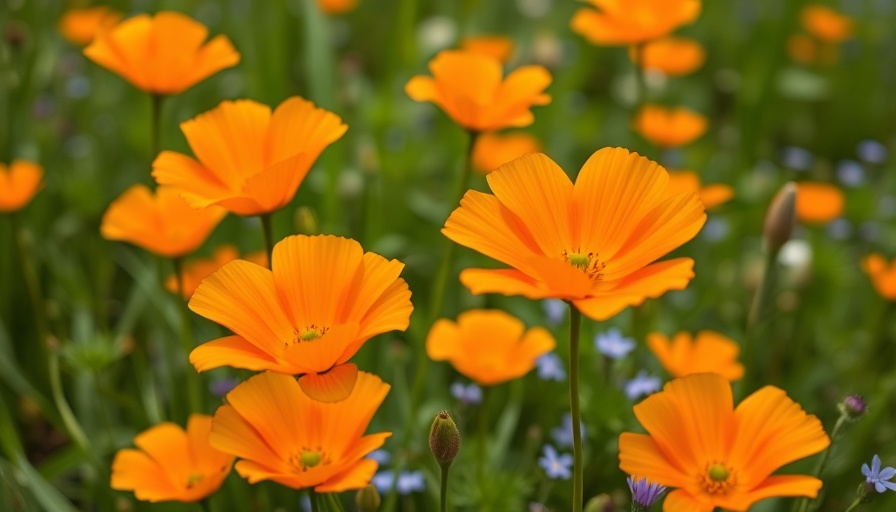
The Golden Glow of California Poppies
California poppies (Eschscholzia californica), with their vibrant yellow-orange blooms, are much more than just a pretty flower; they embody the spirit of the California landscape and offer a plethora of benefits for both gardeners and nature enthusiasts alike. Whether you're a seasoned green thumb or a novice gardener, adding these easy-to-grow plants to your garden beds brings a splash of sunshine, especially as cooler days loom.
A Brief History of the California Poppy
Native to the western United States, the California poppy has been cherished for centuries, recognized as California's state flower since 1903. Indigenous peoples historically used poppies for medicinal purposes, showcasing the plant's long-standing importance. Today, their use extends beyond traditional practices, finding a place in contemporary herbal medicine as a soothing remedy for various ailments, including stress and insomnia.
Identifying the California Poppy: A Delightful Challenge
When introducing California poppies to your garden, it’s crucial to identify them correctly to avoid confusion with similar-looking plants like Welsh poppies. California poppies distinguish themselves with their luminous petals that seem to glow from within, paired with feathery blue-green foliage. The seed pods mature to reveal a unique shape, setting them apart further as a visual treat in the garden.
Growing Your Own California Poppies
If you're ready to welcome California poppies into your outdoor space, you'll find that they are remarkably easy to grow, requiring minimal maintenance. Here's how to get started:
- Soil Preparation: Plant these beauties in well-draining soil. California poppies thrive in sandy or loamy soils with good drainage, making them ideal for areas with less-than-ideal conditions.
- Sunlight Needs: Find a sunny spot! These flowers love the sun and perform best when planted in full sunlight for at least six hours a day.
- Water Wisely: While they are drought-sensitive, young plants require regular watering until they establish a solid root system. After that, they can withstand dry spells remarkably well.
California Poppy Care: Best Practices
To keep your poppy plants vibrant and blooming, consider following these maintenance tips:
- Pruning: Deadhead spent blooms to encourage new growth and prolong the flowering season. This simple task can lead to a more robust display of blossoms over time.
- Fertilization: Limit fertilization; California poppies prefer low-nutrient soils. Over-fertilization can lead to lush foliage at the expense of flowers.
- Pest Control: Generally, these flowers are pest-resistant, but always monitor for any unexpected garden insects that can undermine your efforts.
Harvesting: Enjoying the Fruits of Your labor
California poppies can also contribute to your kitchen and wellness routine:
- Harvesting Seeds: Once the seed pods are dry, gather seeds for next year's planting or share them with fellow gardening friends!
- Culinary Uses: The petals can be used in salads or as a garnish, adding a delightful color.
Exploring the Health Benefits of California Poppies
Beyond their aesthetic beauty, California poppies offer a variety of health benefits. They’re commonly consumed in tea or tincture form for their calming properties. Their abilities to reduce anxiety, promote better sleep, and relieve pain make them a wonderful addition to herbal remedies.
Conclusion: Cultivating Joy with California Poppies
Incorporating California poppies into your garden not only brightens your outdoor space but also introduces a range of benefits—from visual joy to welfare-enhancing properties. As you prepare your space for spring, envision those radiant golden blooms swaying in the breeze, promising warmth and beauty in your surroundings.
If you're interested in enhancing your garden, consider exploring more about suitable garden plants and landscaping ideas. Embrace the joy of gardening and discover the fantastic benefits these cheerful flowers bring!
 Add Row
Add Row  Add
Add 




Write A Comment